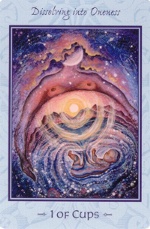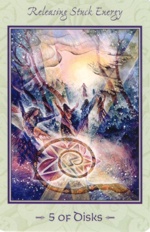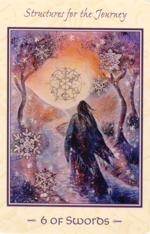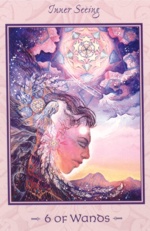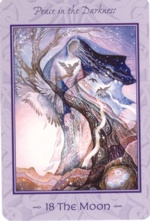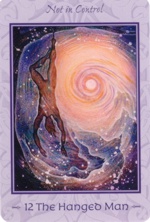|
Tarot Reflections |
March 01, 2003 |
|
Deck Review: Tarot
of Transformation Valerie Sim, CTGM |
||||||||||
|
I have heard of this occurring with other recently released tarot decks. Perhaps it is something inherent in the printing process used these days? Seems like a minor quibble, but I hope the publishers can do something about this as it has even made a few tarotists I know slightly ill. Fortunately, I was not that adversely affected, but did find it distinctly unpleasant.
The Art
|
|||||||||
Majors
Suit Cards Swords Mental Realm (and original patterns, including sacred geometry & changing paradigms) Disks Material World & Daily Life (plus instinctual wisdom personified by animals) Cups Emotional World (as well as defensive strategies and patterned responses) Wands Chi or Life-force energy, (with an additional correlation with the energies of the physical and transpersonal chakras)
Courts Server (Page) - expresses the impulse to help Teacher (Knight) - the embodiment of some aspect of wisdom of the suit Healer (Queen) – one who exerts a healing influence on oneself or others Master (King) – the integrated whole or most comprehensive expression of that suit Working With the Cards
* What do I need to remember in this situation? * What is trying to unfold? * What is the basic energy of this situation? * What am I up against here? * What is the deeper lesson in this situation/relationship? * What is the healing potential of this situation/relationship? (p 11) I tried this for a couple of different situations and it worked beautifully.
In Conclusion The set is published by Red Wheel/Weiser (http://www.redwheelweiser.com/) and is currently available through many local bookstores, Amazon, Barnes & Noble and Borders. Tarot of Transformation. Author: Jami Lee Cori. Artist: Willow Arlenea (2002) Boston: Red Wheel/Weiser. ISBN 1-57863-239-0 |
||||||||||
|
Subscribe to Tarot Reflections, and receive notification of each update! |
|
Request to be added to the list by sending email to TarotReflections-subscribe@yahoogroups.com! |
All articles remain the
property of their respective authors.
Tarot Reflections is a publication of the American Tarot Association
- Copyright (C) 2003
Questions or Comments? Contact Us.



